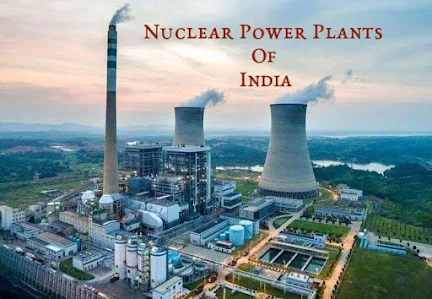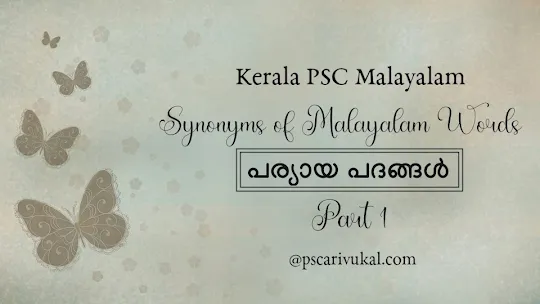The Nuclear Power is the fifth largest power source in India following thermal, hydroelectric, and renewable sources.
Nuclear Power Corporation of India Limited (NPCIL) under the Department of Atomic Energy (DAE) is responsible for the construction, design, operation and maintenance of the nuclear power plants across the country.
India currently operates 22 nuclear power reactors ins in 7 states, with a total installed capacity of 6780 MegaWatt electric (MWe) contributing 3.11% of total power generation in India.
Apart from these, India also has 18 Pressurized Heavy Water Reactors (PHWRs) and 4 Light Water Reactors (LWRs).
Nuclear Power Plants of India is an important topic for all competitive exams including IBPS, RRB Insurance, PSC & UPSC exams.
Basic Facts
- Atomic Energy Commission was established in – 1948.
- NPCIL was set up in – 1987.
- Headquarters of NPCIL – Mumbai
- Total No. of Nuclear Power Plants in India – 7.
- Total No. of Nuclear Reactors in India – 22.
- No. of Pressurized Heavy Water Reactors (PHWRs) –18.
- No. of Light Water Reactors (LWRs) – 4.
- First Atomic/Nuclear Power Plant In India – Tarapur (150MW, 1969).
- First Nuclear Reactor of India – Apsara I (Maharashtra, 1956).
- First Nuclear Reactor of Asia – Apsara I.
- Designed by – Bhabha Atomic Research Center (BARC).
- Collaboration with – United Kingdom.
- Fuel – 80% enriched Uranium.
- Inaugurated by – Prime Minister Nehru (January 20, 1957).
- Fuels used in Nuclear Reactors – Uranium, Plutonium, Thorium.
- Name the elements used in Nuclear Reactors as Control Rods – Boron, Cadmium, Hafnium.
- Name the common Moderators used in Nuclear Reactors – Water, Heavy water (D2O) & Graphite.
- reduces the speed of fast neutrons thereby sustaining the nuclear reaction.
- First Heavy Water Plant in India – Nangal (1962).
- First indigenously built Nuclear Power Station in India – Madras Atomic Power Station.
- Largest Nuclear Power Plant In India – Kudankulam Nuclear Power Plant (2,000 MW).
- Second Largest Nuclear Power Plant In India – Rawabhata (Rajasthan).
- Third Largest Nuclear Power Plant In India – Kaiga (Karnataka).
- India's Nuclear Power Plant similar in structure compared to Fukushima Daiichi of Japan – Kudankulam Nuclear Power Plant.
- The nuclear plant that set world record for functioning continuously without any interruption for more than 941 days – Kaiga Atomic Power Station (Karnataka, 2018).
List of Nuclear Power Plants in India
The following table lists all the 7 important Atomic Power Stations of India:
| Name | Location | Year of Commission |
|---|---|---|
| Kakrapar Atomic Power Station (KAPP) | Kakrapara (Gujarat) | 1993 |
| Kaiga Power Project (KPP) | Kaiga (Karnataka) | 2000 |
| Koodangulam Atomic Power Station (KNPP) | Koodangulam (Tamil Nadu) | 2013 |
| Madras Atomic Power Station (MAPS) | Kalpakkam (Tamil Nadu) | 1984 |
| Narora Atomic Power Station (NAPS) | Narora (Uttar Pradesh) | 1991 |
| Rajasthan Atomic Power Station (RAPS) | Rawabhata (Rajasthan) | 1973 |
| Tarapur Atomic Power Station (TAPS) | Tarapur (Maharashtra) | 1969 |
List of Planned Nuclear Power Plants in India
The following table lists all the planned Atomic Power Stations of India:
| Name/Location | State | Total capacity (MW) |
|---|---|---|
| Jaitapur | Karnataka | 9,900 |
| Kovvada | Andhra Pradesh | 6,600 |
| Kavali | Andhra Pradesh | 6,000 |
| Gorakhpur | Haryana | 2,800 |
| Mahi Banswara | Rajasthan | 2,800 |
| Chutka | Madhya Pradesh | 1,400 |
| Kudankulam Unit 5 & 6 | Tamil Nadu | 2,000 |
| Chennai | Tamil Nadu | 1,200 |
📝 SideNotes:
- First Chairman of BARC – Homi J. Bhabha.
- Father of the Indian Nuclear Program – Homi J. Bhabha.
- Father of the Indian Space Program – Vikram Sarabhai.
- The first successful nuclear reaction experiment credited to – Ernest Rutherford (1919).
- He bombarded nitrogen nuclei with alpha particles which resulted in the emission of protons and the creation of oxygen nuclei.
- The world's first self-sustaining, controlled nuclear chain reaction was conducted by – Enrico Fermi (code name: Chicago Pile-1, 1942).
- The Code name for the world's first nuclear explosion / first detonation of a nuclear weapon – Trinity (conducted by USA, 1945).
- Control Rods – used for controlling the fission reaction in the nuclear reactors, they can be inserted or removed from nuclear reactor core and works by absorbing excess neutrons produced during the reaction.
Thanks for reading!!!





Post a Comment
Post a Comment